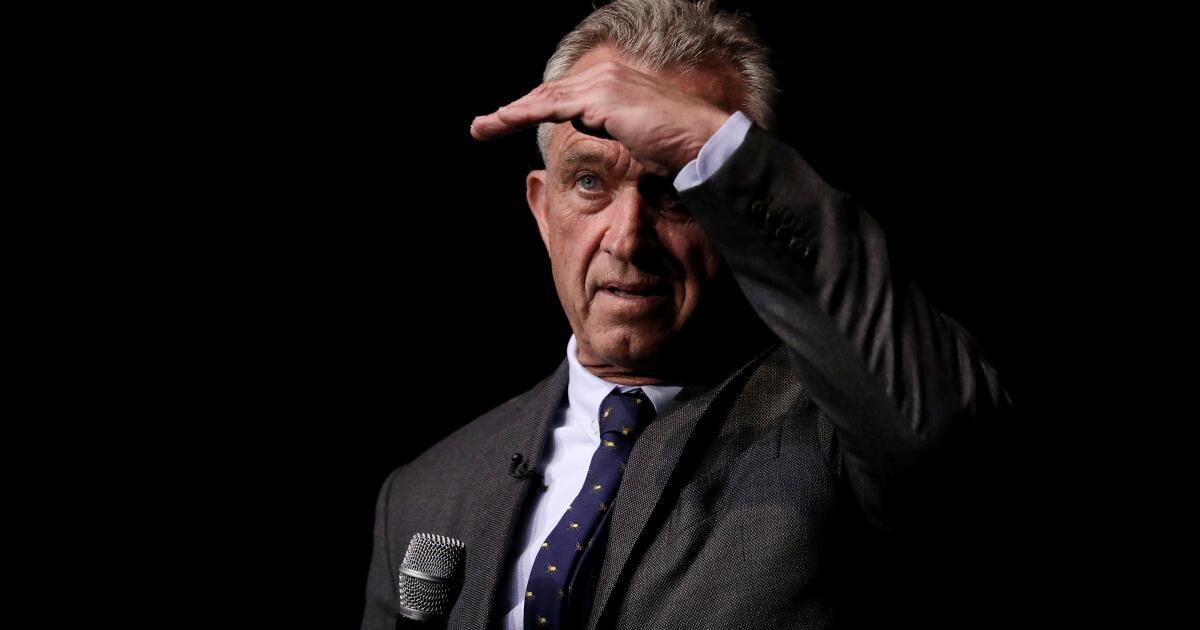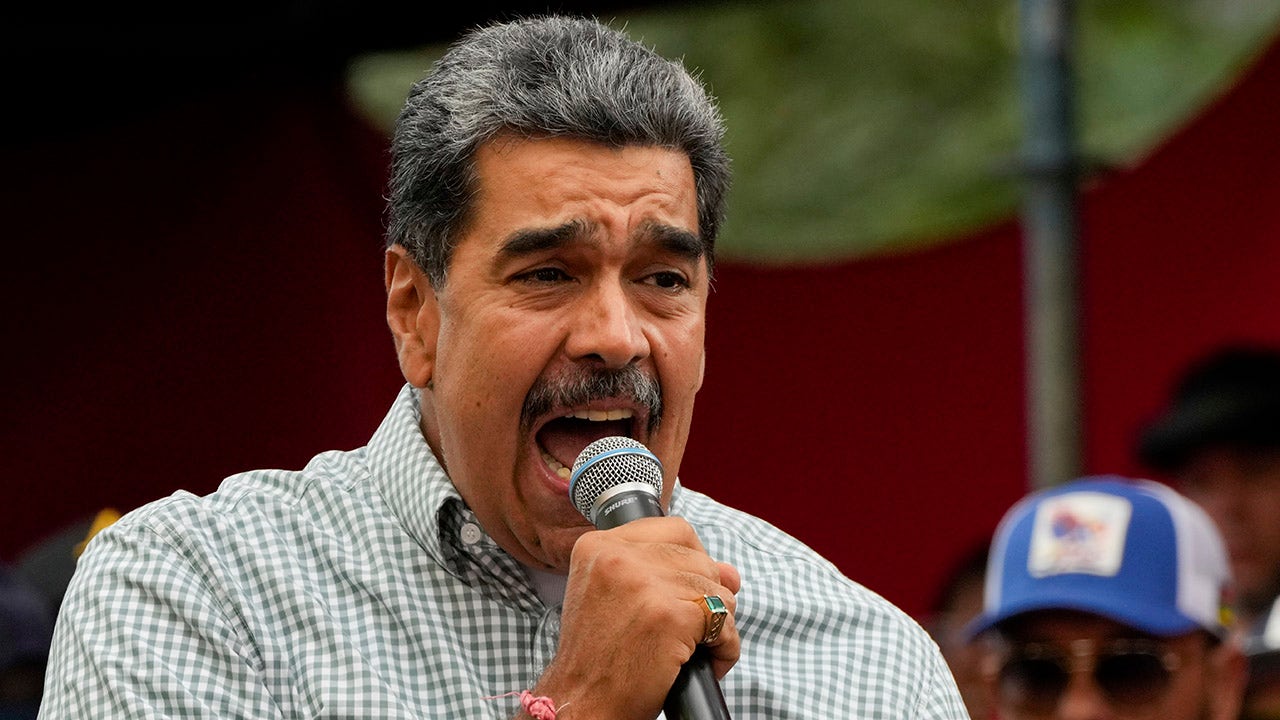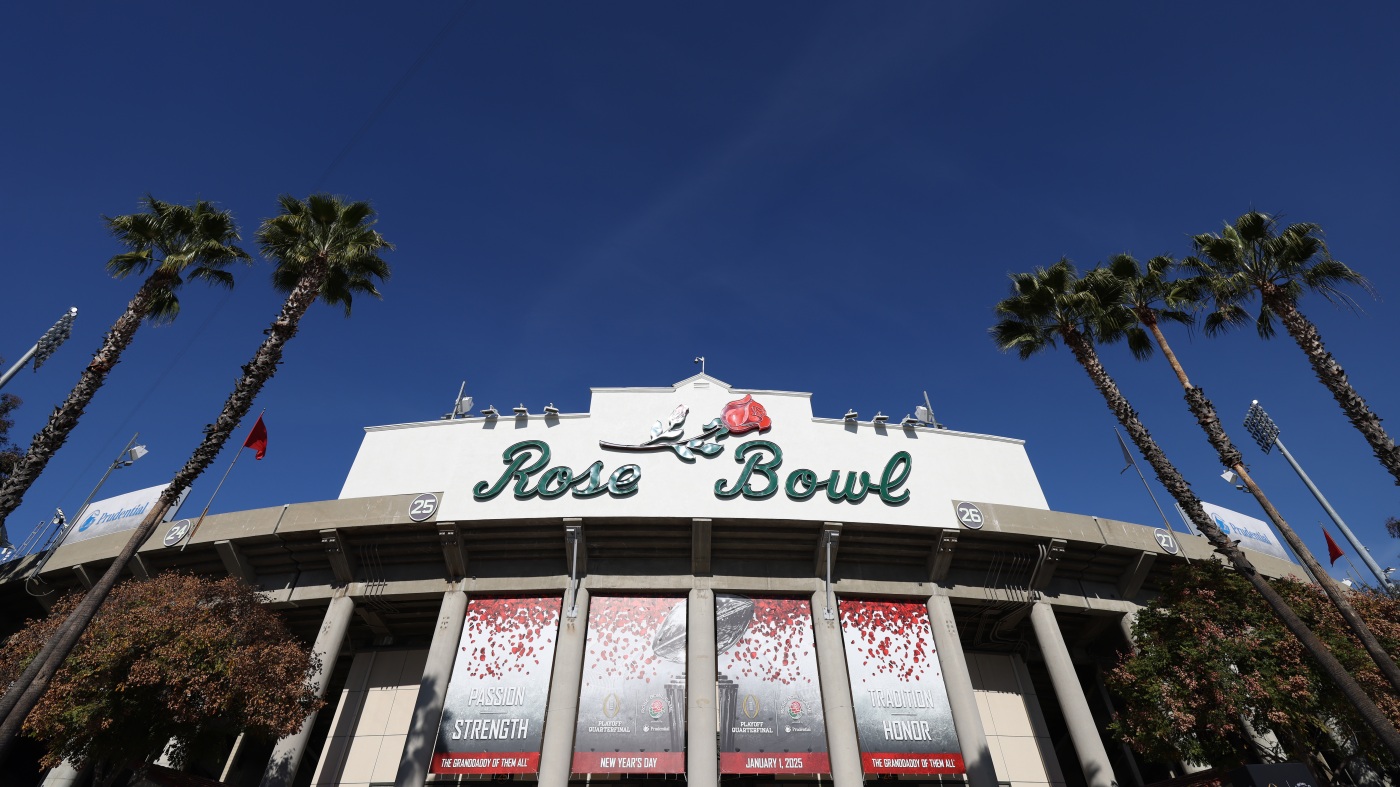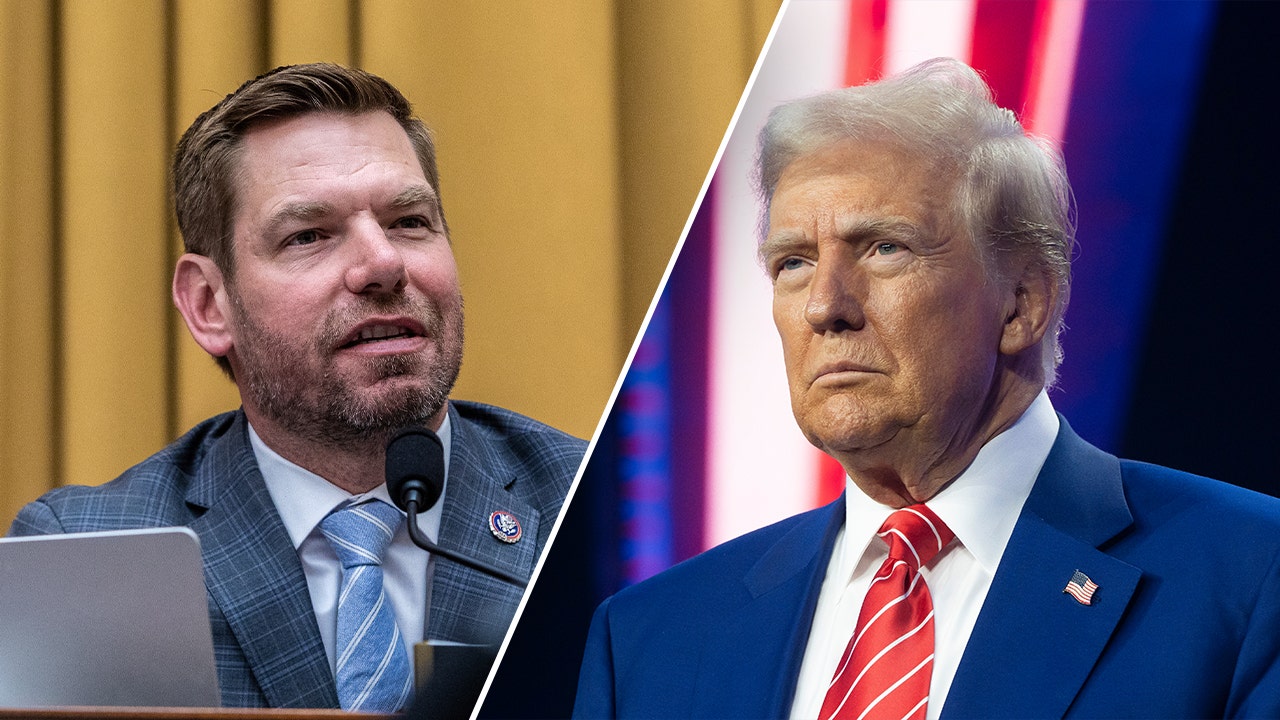Business
Column: Here's one key reform that can fix U.S. healthcare

For more than 50 years, as the economics of American healthcare and health insurance have evolved, one theory has persisted, unchanged: To promote better and more efficient medical treatment, patients must have “skin in the game.”
The idea is that requiring fees for doctor or hospital visits — through co-pays, deductibles and other forms of cost-sharing — will prompt people to think twice before seeking treatment for anything but a truly serious condition.
“On the question of whether patients should have to pay part of the cost of their covered medical care, our profession’s advice has been unequivocal,” health economists Liran Einav of Stanford and Amy Finkelstein of MIT wrote in their 2023 book, “We’ve Got You Covered: Rebooting American Health Care.” “Patients must pay something for their care, otherwise they’ll rush to the doctor every time they sneeze.”
Among all advanced industrial countries, the U.S. goes furthest in using premiums, copays, and deductibles to influence access to care.
— Merrill Goozner, STAT
Einav and Finkelstein own up to having “preached the gospel” of skin-in-the-game “to generations of students.”
Now here’s their punchline: “We take it back.”
To healthcare reformers such as single-payer advocates Adam Gaffney, David U. Himmelstein and Steffie Woolhandler, the confessional by Einav and Finkelstein “may signal an encouraging shift in elite opinion, at least among economists,” as they wrote recently in the New York Review of Books.
Others have begun to take notice. “Among all advanced industrial countries, the U.S. goes furthest in using premiums, copays, and deductibles to influence access to care,” the veteran healthcare journalist Merrill Goozner observes. “It is time to put an end to this failed experiment.”
Yet the imposition of financial obstacles to limit access to care still exerts a powerful influence on healthcare policy in the U.S. In part, this is because it makes sense, superficially. The mantra goes: “If you want less of something, tax it more.” So it has a built-in appeal to government budget hawks and corporate executives who want to reduce healthcare spending.
For some, there’s a moral component — why shouldn’t people take personal responsibility for their own health, whether by smoking and eating less or paying for healthcare partially out of their own pockets, even if they have to be forced to make treatment choices based partially on their out-of-pocket costs?
Then there’s the empirical evidence: It’s true that the higher the co-pays and deductibles, the less medical care people seek, on average.
The seminal study on this topic was Rand’s Health Insurance Experiment, reported in 1981. Starting in 1971, Rand recruited 2,750 families — 7,700 individuals — slotted randomly into five groups: One was offered free care, three groups were offered different levels of cost-sharing, and the fifth was placed in a nonprofit HMO.
Rand found that the groups with cost-sharing made one or two fewer physician visits a year and had 20% fewer hospitalizations than the group with free care. Their dental visits, prescriptions and mental health treatments were also lower. Unsurprisingly, they spent less on healthcare.
The initial findings seemed to validate the skin-in-the-game theory. As Rand continued reporting out the results over the next few years, however, air began to leak out of the balloon.
It became clear that although the cost-sharing subjects cut back on ineffective or unnecessary care, they also cut back on effective and necessary treatments. The reduced utilizations, Rand found, occurred because the subjects decided to delay or forgo treatments, possibly inadvisedly. Once they initiated care, the effect of cost-sharing dropped away, as the patients ceded their decision-making to their healthcare providers.
Some decisions weren’t affected at all by cost-sharing. “The proportion of inappropriate hospitalizations was the same (23 percent) for cost-sharing and free-plan participants, as was the inappropriate use of antibiotics,” Rand reported. Nor did cost-sharing prompt subjects to seek out higher-quality care; the general quality of outpatient and dental care was “surprisingly low for all participants.”
Although Rand found “no adverse effect on participants’ health” from the reduction in services prompted by cost-sharing, the free plan led to better healthcare for plan members in four categories: improved control of hypertension, better vision care, better dental care for the poorest patients, and fewer serious health symptoms for the poorer patients, including less chest pain when exercising and fewer episodes of loss of consciousness.
Once cost-sharing became a standard element of American health insurance, Gaffney, Himmelstein and Woolhandler write, “the consequences were dire.”
The Heritage Foundation developed a model combining extreme deductibles and tax-advantaged savings accounts to pay the out-of-pocket expenses, which Heritage argued would “transform patients into prudent consumers.” The high-deductible/health savings account model was enacted into law, but plainly has failed to create an army of prudently cost-sensitive patients.
Co-pays and deductibles became permanently etched into employer-sponsored health plans. When the initial Rand findings were published, report Gaffney, Himmelstein and Woolhandler, only 30% of private health plans had a deductible for hospital stays; today 90% of workers with employer plans have annual deductibles averaging $1,735 per participant. Conservative governors and legislatures have tried to impose cost-sharing fees on patients in Medicaid, the nation’s healthcare program for low-income households.
And, of course, the cost-sharing revolution has utterly failed to control U.S. healthcare costs or bring about a healthier nation. Per capita healthcare spending in the U.S. has risen from about $350 in 1970 to $14, 470 in 2023. In inflation-adjusted terms, it has increased nearly sevenfold.
As for health outcomes, of 13 wealthy countries tracked by the Peter G. Peterson Foundation, the U.S. spends the most per capita by a wide margin and scrapes the bottom of the barrel on outcomes — the worst average life expectancy, worst infant mortality rate, worst rate of unmanaged diabetes, worst maternal mortality and nearly the worst heart attack mortality.
Obviously, the American healthcare system has many flaws other than its reliance on cost-sharing. But all its flaws are related in some way to its economic structure, which has produced legions of uninsured and underinsured people, as well as crushing medical debt for millions. (On Tuesday, the Consumer Financial Protection Bureau made final a rule requiring medical debts to be removed from consumers’ credit reports. But the debts still remain.)
In recent years, the U.S. has started to get its arms around the uninsured crisis. That’s largely due to the 2010 Affordable Care Act, which has brought access to Medicaid and subsidized health plans for about 42.5 million people. The uninsured rate fell from nearly 18% (or 46.5 million people) in 2010 to 9.5% (25.3 million) in 2023.
Can these gains be advanced and sustained? The incoming Trump administration doesn’t present grounds for optimism. In his first term, Donald Trump and his acolytes worked tirelessly to undermine the ACA and Medicaid. The number of uninsured rose to 28.9 million in 2019 from 26.7 million in 2016.
It would surprise no one if the new administration takes a hands-off approach to the increasing corporatization of healthcare, including the takeover of hospitals and nursing homes by penny-pinching private equity firms and the pushing of more Medicare enrollees to join private Medicare Advantage plans, which have become known for costing the government more than traditional Medicare, and for profit-seeking through claim denials.
Still, it’s the installation of cost-sharing as a medical management tool that harms people day in and day out. That the tool has never fulfilled its promise doesn’t seem to faze policymakers. On the surface, after all, it should work, shouldn’t it?

Business
Biden administration bars medical debt from credit scores

The federal Consumer Financial Protection Bureau has issued new regulations barring medical debts from American credit reports, enacting a major new consumer protection just days before President Biden is set to leave office.
The rules ban credit agencies from including medical debts on consumers’ credit reports and prohibit lenders from considering medical information in assessing borrowers.
These rules, which the federal watchdog agency proposed in June, could be reversed after President-elect Donald Trump takes office Jan. 20. But by finalizing the regulations now, the CFPB effectively dared the incoming Trump administration and its Republican allies in Congress to undo rules that are broadly popular and could help millions of people who are burdened by medical debt.
“People who get sick shouldn’t have their financial future upended,” CFPB Director Rohit Chopra said in announcing the new rules. “The CFPB’s final rule will close a special carveout that has allowed debt collectors to abuse the credit reporting system to coerce people into paying medical bills they may not even owe.”
The regulations fulfill a pledge by the Biden administration to address the scourge of healthcare debt, a problem that touches an estimated 100 million Americans, forcing many to make sacrifices such as limiting food, clothing, and other essentials.
Credit reporting, a threat that has been wielded by medical providers and debt collectors to get patients to pay their bills, is the most common collection tactic used by hospitals, a KFF Health News analysis found.
The impact can be devastating, especially for those with large healthcare debts.
There is growing evidence, for example, that credit scores depressed by medical debt can threaten people’s access to housing and drive homelessness. People with low credit scores can also have trouble getting a loan or can be forced to borrow at higher interest rates.
That has prompted states including Colorado, New York, and California to enact legislation prohibiting medical debt from being included on residents’ credit reports or factored into their credit scores. Still, many patients and consumer advocates have pushed for a national ban.
The CFPB has estimated that the new credit reporting rule will boost the credit scores of people with medical debt on their credit reports by an average of 20 points.
But the agency’s efforts to restrict medical debt collections have drawn fierce pushback from the collections industry. And the new rules will almost certainly be challenged in court.
Congressional Republicans have frequently criticized the watchdog agency. Last year, then-chair of the House Financial Services Committee Patrick McHenry (R-N.C.) labeled the CFPB’s medical debt proposal “regulatory overreach.”
More recently, billionaire Elon Musk, whom Trump has tapped to co-lead his initiative to shrink government, called for the elimination of the watchdog agency. “Delete CFPB,” Musk posted on the social platform X.
This story was produced by KFF Health News, which publishes California Healthline, an editorially independent service of the California Health Care Foundation.
Business
Saudi Arabia May Partner With UFC Owner TKO to Create Boxing League

In the days after Donald J. Trump was re-elected president, one of his most high-profile stops was at an Ultimate Fighting Championship event at Madison Square Garden.
Mr. Trump’s appearance in the front row was notable, as was the presence of some of his closest confidants, like Elon Musk, who sat alongside him. But few in attendance for the fights would have recognized the other man sitting beside the president-elect.
Yasir al-Rumayyan, the governor of Saudi Arabia’s vast sovereign wealth vehicle, the Public Investment Fund, watched the action from ringside, and is getting even closer to being part of the action. A company owned by the fund is close to creating a boxing league with TKO, the owner of Ultimate Fighting Championship. A deal for what would be a new competition, featuring up-and-coming boxers tied exclusively to the league, could be announced within weeks, according to three people familiar with the matter.
TKO said in a statement on Wednesday that it had “nothing to announce,” but that it “would evaluate any unique and compelling opportunity that could fit well in our portfolio of businesses and create incremental value for our shareholders.”
The wealth fund did not comment.
The potential investment in TKO follows a Saudi Arabian effort in June to create a multibillion-dollar boxing league that would aim to unite the world’s best boxers, who for decades have been divided by rival promoters and fighting for titles controlled by an alphabet soup of sanctioning bodies. That effort, while not completely abandoned, had proved complicated and expensive, even for a country like Saudi Arabia, which for the past half decade has disbursed billions to become a player across some of the world’s biggest sports.
The investment in the new league will be made by Sela, a subsidiary of the Public Investment Fund. TKO — which is majority controlled by the entertainment and sports conglomerate Endeavor and embodied by Dana White, the U.F.C. empresario, a longtime friend of Mr. Trump’s — would be a managing partner. In return, TKO has been offered an equity stake and a share of the revenue, according to the people familiar with the matter, who spoke on the condition of anonymity ahead of the official announcement.
Saudi Arabia has backed some of the biggest and richest boxing bouts in history in recent years. It has played host to major title fights, most recently a face-off between Oleksandr Usyk and Tyson Fury, which ended with Mr. Usyk as the first undisputed heavyweight champion in more than a generation. Fights like that, which for years proved almost impossible to negotiate, have taken place thanks to the millions of dollars put on the table by Turki al-Sheikh, a government official with close ties to the kingdom’s crown prince, Mohammed bin Salman.
Mr. al-Sheikh, a former security guard, has become perhaps the most powerful man in boxing, seen at ringside and even inside the ring for the biggest bouts. He is also a frequent recipient of messages of thanks from some of the best-known fighters and boxing promoters, who refer to him as “His Excellency.” He pushed for a partnership with Mr. White, who over the last two decades has turned the U.F.C. from a $2 million company into one worth more than $10 billion. Talks have been taking place for more than a year in the United States, Europe and Saudi Arabia.
Mr. al-Sheikh had suggested in interviews that he was planning a new boxing venture. And he has made no secret of his frustration at the way the sport has been run, with the best fighters rarely meeting in their prime. In November, he purchased Ring Magazine — the century-old bible of the sport — and vowed to re-establish its prominence.
Mr. al-Sheikh has also teamed up with the World Boxing Council, a sanctioning organization, to create the Boxing Grand Prix, a tournament for young boxers.
For TKO, which owns both the U.F.C. and World Wrestling Entertainment, the venture has little risk, given that the Saudis are footing the bill. “If we were to get involved in boxing, we would expect to do so in an organic way, not an M&A way,” said Mark Shapiro, TKO’s president, on an earnings call in November, referring to mergers and acquisitions.
He added, “So, i.e., we’re not writing a check.”
Should the deal be completed, TKO will earn management fees of close to $30 million a year. Saudi Arabia is expected to pay significantly more in hosting fees to the league than any other country, according to details of the plan reviewed by The New York Times. Two fights there will bring in more than $40 million in fees. Other bouts are planned for the United States and Europe, where the hosting fees will be far lower.
TKO has also been talking with other parties, including other Arab nations, about the boxing league, according to one of the people familiar with the matter.
Endeavor, TKO’s parent company, has at times had a strained relationship with Saudi Arabia, and this potential partnership suggests that it has largely been repaired. In 2019, after the killing of the Saudi journalist Jamal Khashoggi, Endeavor returned $400 million that the Saudi sovereign wealth fund had invested in the company.
For the Saudis, getting a partner like Mr. White would come at an opportune time. He joined the board of Meta this week, and has spoken at the last three Republican National Conventions. Mr. Trump regularly hosted U.F.C. events at his properties in the organization’s early years, and he has attended many fights. Mr. Trump and Mr. al-Rumayyan are also close, with the Saudi-owned LIV golf championship holding several of its events at Mr. Trump’s courses, including one scheduled for April in Florida.
Saudi officials have described sports and entertainment as major pillars of a strategy, known as Vision 2030, to pivot their economy away from its reliance on oil exports, and as a part of efforts to liberalize society. Critics have described those efforts differently, positioning them as a way of using sports to distract the focus from Saudi Arabia’s human rights record, a tool known as sportswashing.
What TKO would get is a partnership with the biggest sports investor in the world. Saudi Arabia has invested in teams, talent and events across a wide range of sports, most recently securing rights to the 2034 men’s soccer World Cup, the most-watched event on the planet.
The U.F.C.’s U.S. media rights agreement with ESPN expires this year, as does the network’s deal with Top Rank, a top boxing promoter. TKO could try to bundle the rights to its new boxing league with the U.F.C. rights to help shore up the fledgling boxing league.
But applying the U.F.C. playbook to boxing will be extremely difficult. Boxing is a much more heavily regulated sport than mixed martial arts, with the federal Muhammad Ali Act mandating a separation in boxing between the role of manager and promoter, and the public listing of purse figures.
Unlike U.F.C., the league would not include the most prominent boxers. And they may not think there is an upside to joining it. While the fractured nature of boxing means its earning potential isn’t maximized for promoters and managers, top boxers earn far more than top M.M.A. fighters.
In October, the U.F.C. settled an antitrust lawsuit filed by former fighters — who claimed that the company illegally suppressed fighters’ pay — for $375 million. Documents submitted as evidence in that suit showed that the U.F.C. paid less than 20 percent of its revenue to its fighters.
In boxing, those figures are reversed, with fighters combining to earn well over 50 percent of the revenue from any fight.
Business
Universal Studios Hollywood, longtime Malibu restaurants and other L.A.-area business affected by the fires

As winds whip through Southern California, scores of businesses — from local restaurants and community institutions to film and television productions and a major theme park — have been affected by the multiple fires burning in the region.
The Palisades fire now has burned more than 5,000 acres, destroying numerous homes and businesses in the Pacific Palisades area. The Eaton fire has burned more than 10,000 acres and many structures in the Pasadena and Altadena areas, while the Hurst fire near Sylmar has burned more than 500 acres.
Already, several long-standing businesses have been lost, including the Reel Inn, a casual seafood restaurant and a Malibu institution for more than 30 years. All of the restaurant’s staff are safe, the restaurant’s owners said.
“We are so grateful for the 36 years we’ve been a part of the community. Grateful to all of our customers. We are heartbroken and unsure what will be left,” owners Teddy and Andy Leonard wrote in an Instagram post Tuesday evening.
Vegetation around the Getty Villa in Pacific Palisades caught fire late Tuesday, though the museum’s structures were not affected, and its staff and collections are safe, the museum said in a post on X. The Getty Villa will be closed at least through early next week, and the Getty Center in Brentwood will be closed through Jan. 12 “out of caution and to help alleviate traffic in the area,” the museum said.
Livestock and pet supplies store Malibu Feed Bin was also destroyed after 60 years in business, the store wrote in a Facebook post.
Universal Studios Hollywood and its CityWalk shopping area were closed Wednesday due to the fires and extreme wind conditions in Southern California. The theme park said it will “continue to assess the situation” and expects to reopen on Thursday, according to a statement on its website.
“The safety of our team members and our guests is our top priority,” the statement said. All noncritical NBCUniversal employees on the lot were told to work from home.
The theme park wasn’t the only Hollywood institution affected by the fires. ABC canceled Wednesday night’s taping of “Jimmy Kimmel Live” in Hollywood and plans to air a repeat episode instead.
Two CBS productions also scheduled to tape Wednesday — “The Price Is Right” game show hosted by Drew Carey and “After Midnight,” a game show featuring Taylor Tomlinson — were similarly postponed.
NBCUniversal put several television and film productions on temporary hold due to the inability of crews to access portions of its famed studio lot. The company confirmed that production of “Hacks,” “Happy’s Place,” “Loot,” “Suits LA” and “Ted” went dark on Wednesday.
Productions on the Warner Bros. lot in Burbank also have been shut down, the studio said.
The extreme wind conditions and raging fires also led to the cancellation of several film premieres and screenings scheduled for Tuesday, including Amazon MGM Studios’ “Unstoppable” and Universal Pictures’ “Wolf Man.” The Wednesday premiere of Paramount Pictures’ “A Better Man” also was canceled, as was the Critics Choice Awards, which was set for Sunday in Santa Monica, according to Variety.
The scope, devastation and geography of the fire have shaken the entertainment industry.
Multiple stars, including Eugene Levy and Steve Guttenberg, and Hollywood executives and producers live in Pacific Palisades due to its proximity to the ocean and the studio lots. Malibu provides the coastal stretch and particularly high-priced oceanfront homes. More modest workers live in Burbank, Glendale, Altadena and Pasadena — communities that are on the fringes of the mountains.
In an interview on KTLA, Guttenberg urged viewers to leave their keys in their cars if they had to abandon their vehicles along an exit route so first responders and others helping with the fire could clear the road for emergency vehicles.
“This is not a parking lot,” he said on-air. “We really need people to move their cars.”
Firefighters have been battling fires on multiple fronts while dealing with gusts of winds that have hit 100 mph. L.A. county officials said Wednesday that fighting the three major fires has hugely taxed the crews as well as resources.
Times staff writers Alexandra Del Rosario and Julia Wick contributed to this report.
-

 Business1 week ago
Business1 week agoThese are the top 7 issues facing the struggling restaurant industry in 2025
-

 Culture1 week ago
Culture1 week agoThe 25 worst losses in college football history, including Baylor’s 2024 entry at Colorado
-

 Sports1 week ago
Sports1 week agoThe top out-of-contract players available as free transfers: Kimmich, De Bruyne, Van Dijk…
-

 Politics6 days ago
Politics6 days agoNew Orleans attacker had 'remote detonator' for explosives in French Quarter, Biden says
-

 Politics6 days ago
Politics6 days agoCarter's judicial picks reshaped the federal bench across the country
-

 Politics4 days ago
Politics4 days agoWho Are the Recipients of the Presidential Medal of Freedom?
-

 Health3 days ago
Health3 days agoOzempic ‘microdosing’ is the new weight-loss trend: Should you try it?
-

 World1 week ago
World1 week agoIvory Coast says French troops to leave country after decades




/cdn.vox-cdn.com/uploads/chorus_asset/file/24401980/STK071_ACastro_apple_0003.jpg)










